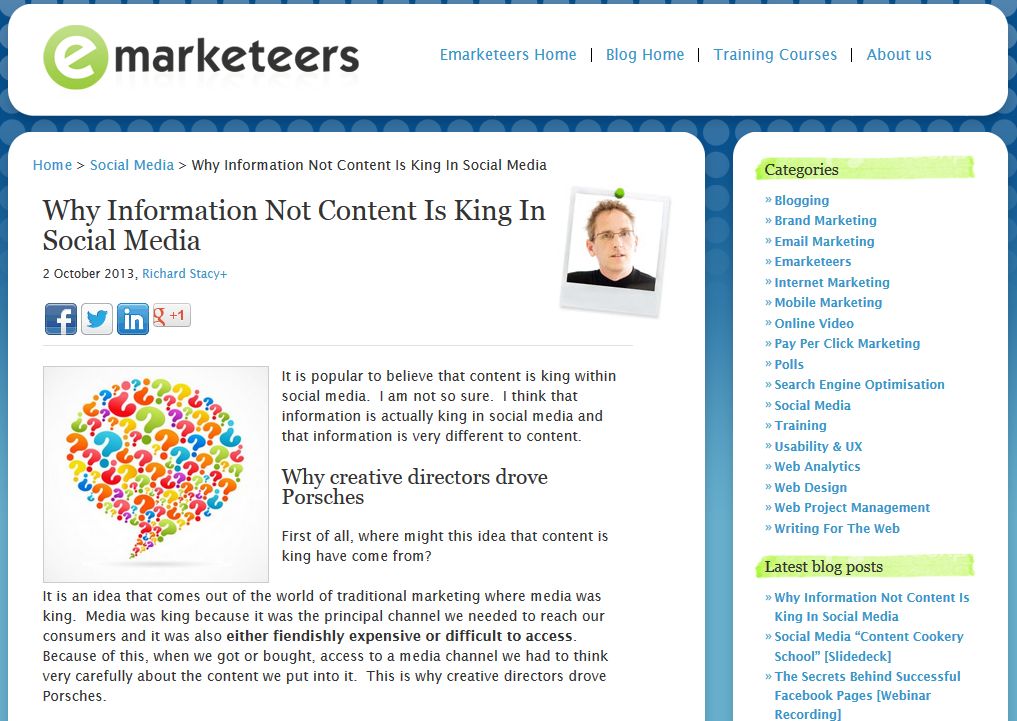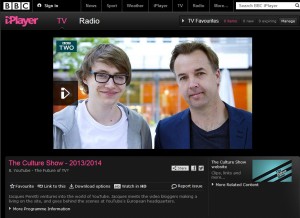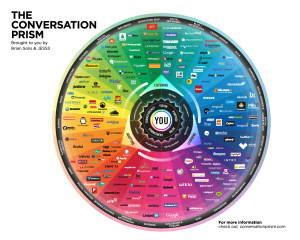Social media and the future of retailing
 It has long been my mantra that the social media revolution is all about the separation of information from a restrictive means of distribution. The interesting thing is how this schism plays out across other areas: for example, the separation of trust from institutions (trust being the information side of the equation and the institution being the distribution side), journalism from journalists, or music from the music business.
It has long been my mantra that the social media revolution is all about the separation of information from a restrictive means of distribution. The interesting thing is how this schism plays out across other areas: for example, the separation of trust from institutions (trust being the information side of the equation and the institution being the distribution side), journalism from journalists, or music from the music business.
A couple of weeks ago I was shopping in John Lewis in Oxford Street, and this caused me to reflect on how this separation was playing-out within high street retailing. I was aided in this reflection by the recent excellent series of documentaries on the history of British retailing by the BBC’s Robert Peston, the last one of which was examining the whole digital revolution in retailing. Effectively what Peston was identifying was a growing separation between visiting a store, where we go to experience products, and purchasing those products which we tend to do on-line.
In the pre-digital world the information (the products) had been tied to a means of distribution (the store) and to a large extent it was the nature of the store – its size and location and thus its cost – which determined what products could sit within it. This mirrors the way in which media, as a means of distribution, has shaped the information that sits within it. But now retailing information is being separated from its (restrictive) means of distribution – product display is being separated from product purchase.
The implication in all of this is that information side of the equation can (in fact must) adapt itself to a world where is has no default distribution partner to shape its destiny. From a retailing perspective this means that certain types of physical store need to move away from their distribution function and shift into becoming providers of information and experience (albeit it you may still purchase items within a store, but probably by doing it using a mobile device and having it delivered to your home, rather than taking an item to a check-out desk and then having to carry it home).
Clearly there will be some types of products that will remain more distribution dependent – groceries or any other product required for immediate usage or consumption for example – and the stores that provide this are what will form the mainstay of what will become a much reduced retail estate as the non-distribution dependent elements shift entirely into the digital space.
I do love it when a theory appears to have a universal application!


 A couple of weeks back I got the opportunity to attend the awards ceremony for the EACA Euro Effies. These are essentially advertising awards (or more precisely awards for advertising agencies) that are not judged by creatives for their creativity, but judged according to how effective they are in meeting the clients’ business objectives. (Should there actually be any other types of awards I ask?). The interesting thing was how little actual advertising featured in many of the winning entries. It reminded me of the sage words of Lou Capozzi , former boss of the MS&L PR network, who – on looking at the changing marcoms landscape – declared “it is all just become PR with zeros added to the budget.”
A couple of weeks back I got the opportunity to attend the awards ceremony for the EACA Euro Effies. These are essentially advertising awards (or more precisely awards for advertising agencies) that are not judged by creatives for their creativity, but judged according to how effective they are in meeting the clients’ business objectives. (Should there actually be any other types of awards I ask?). The interesting thing was how little actual advertising featured in many of the winning entries. It reminded me of the sage words of Lou Capozzi , former boss of the MS&L PR network, who – on looking at the changing marcoms landscape – declared “it is all just become PR with zeros added to the budget.”

